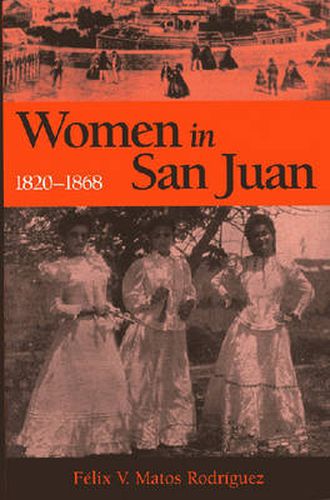Readings Newsletter
Become a Readings Member to make your shopping experience even easier.
Sign in or sign up for free!
You’re not far away from qualifying for FREE standard shipping within Australia
You’ve qualified for FREE standard shipping within Australia
The cart is loading…






When the threat of political revolution lurked behind the shadows of the Spanish colonial state in Puerto Rico, one of the earliest casualties of anti-independence persecution in San Juan was a woman - Maria de las Mercedes Barbudo. But as the 19th century advanced, economic and urban changes weakened patriarchal structures and provided spaces of autonomy for sanjuaneras. Women in San Juan locates the historical roots of women’s contributions to urban modernization, showing how women reacted to and shaped the effort to transform San Juan into a modern, progressive city. Elite and professional women fought to limit the impact of economic changes on their lives from within the city, while poor women and women of color created survival strategies in their newly formed extramural barrios once they had been relocated as part of the state’s modernizing agenda. Beneficence afforded elite women opportunities to support their class-based privilege and leisure while serving as a control mechanism to police poor women. The author moves beyond the standard focus on rural and agricultural issues to explore issues of Puerto Rican urban social history.
$9.00 standard shipping within Australia
FREE standard shipping within Australia for orders over $100.00
Express & International shipping calculated at checkout
When the threat of political revolution lurked behind the shadows of the Spanish colonial state in Puerto Rico, one of the earliest casualties of anti-independence persecution in San Juan was a woman - Maria de las Mercedes Barbudo. But as the 19th century advanced, economic and urban changes weakened patriarchal structures and provided spaces of autonomy for sanjuaneras. Women in San Juan locates the historical roots of women’s contributions to urban modernization, showing how women reacted to and shaped the effort to transform San Juan into a modern, progressive city. Elite and professional women fought to limit the impact of economic changes on their lives from within the city, while poor women and women of color created survival strategies in their newly formed extramural barrios once they had been relocated as part of the state’s modernizing agenda. Beneficence afforded elite women opportunities to support their class-based privilege and leisure while serving as a control mechanism to police poor women. The author moves beyond the standard focus on rural and agricultural issues to explore issues of Puerto Rican urban social history.